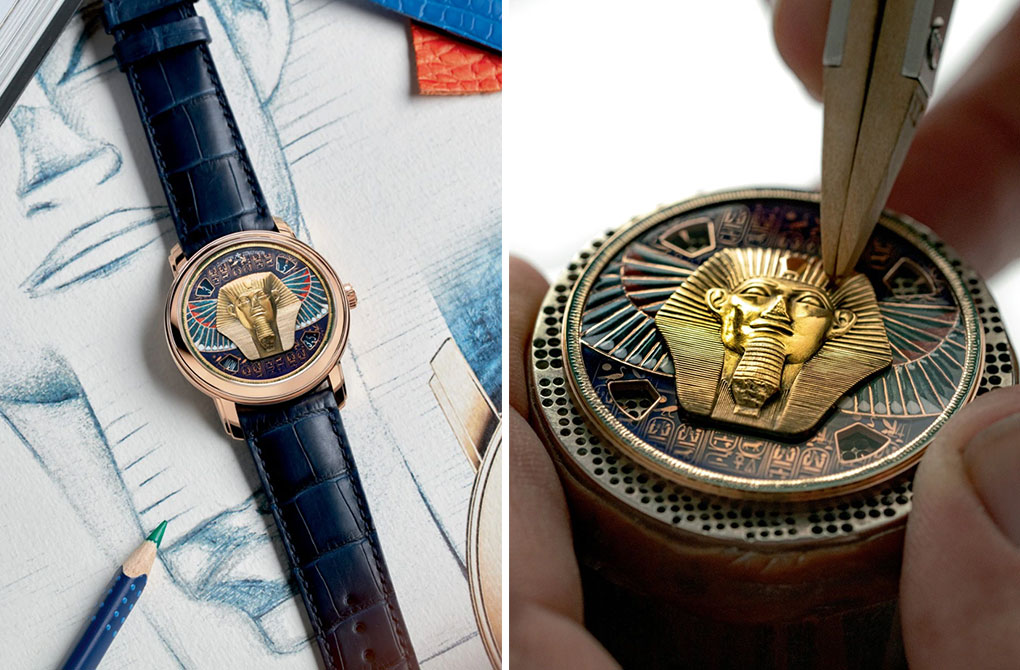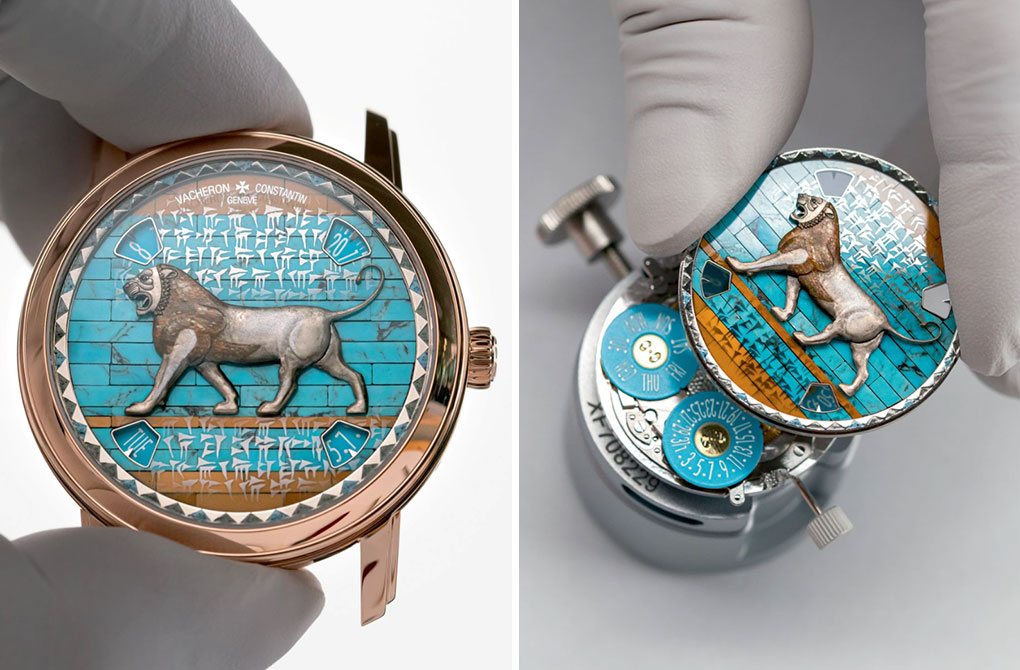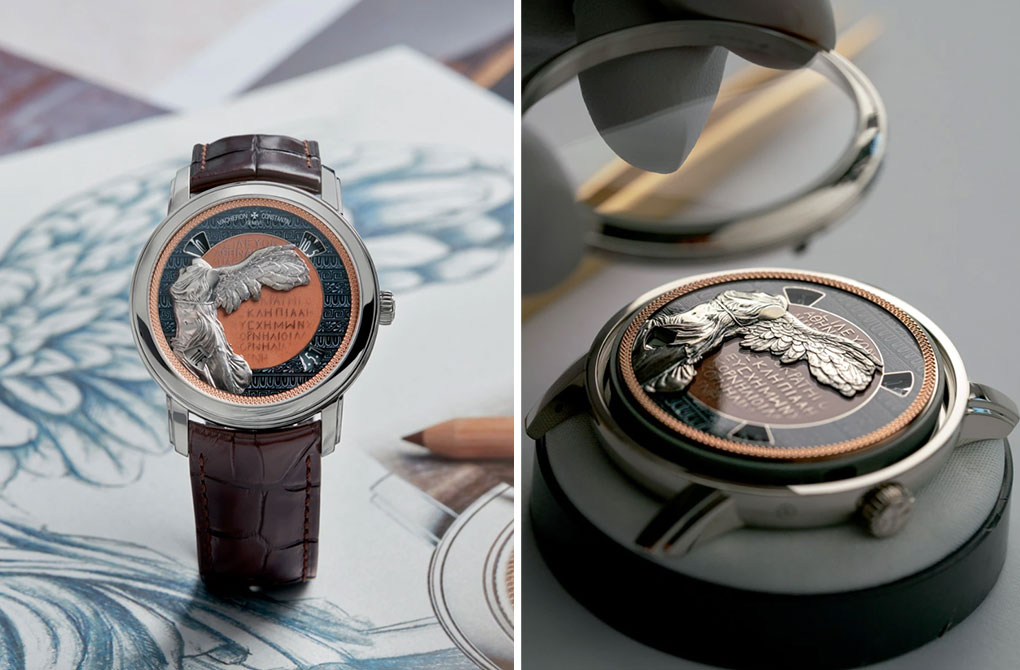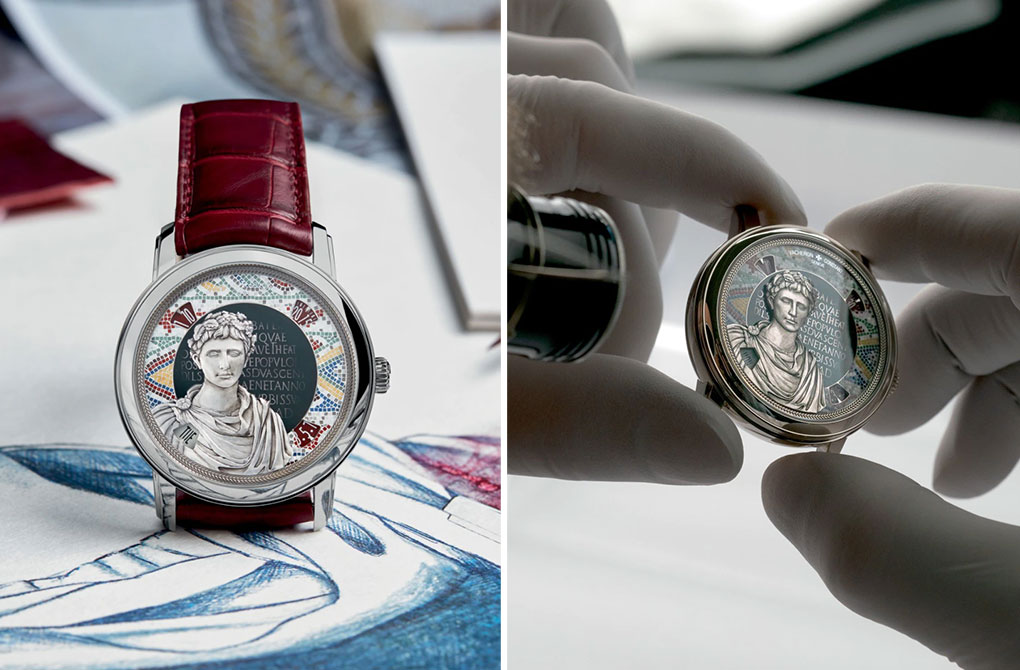Vacheron Constantin Metiers dArt is an Ode to Great Civilizations
- 26th May 2022
- 2470
- 0

Vacheron Constantin collaborated with the Louvre on a new range of Antiquity-themed Métiers d'Art watches. The designers and inventors of the luxury timepiece collaborated with the museum's staff to identify the principal themes of ancient civilizations, four important works representing them, and the craft skills to be applied to honour the masterpieces. Those chosen were the Persian Empire of Darius the Great, Egypt under the Pharaohs, Hellenistic Greece under the successors of Alexander the Great, and Imperial Rome. Each of these iconic Louvre artworks is replicated as a small carved gold appliqué that adorns the watch dials of the Métiers d'Art Tribute to Great Civilizations collection.
Vacheron Constantin has equipped these Métiers d'Art Tribute to Great Civilizations timepieces with its self-winding Manufacture Calibre 2460 G4/2, which includes four discs displaying the hours, minutes, days, and dates. As the apertures for reading the time and calendar indicators are positioned around the dial's circumference, the craftsmen have a wide amount of creative freedom. The watchmaker eliminates the watch hands so as not to obscure the view of these little works of art. On the rear of the movement, pounding at 4 Hz (28,800 vibrations per hour) and having 237 components, the oscillating weight depicts the east front of the Louvre and its beautiful colonnade, inspired by the work of Louis Le Vau and Claude Perrault, based on an 18th-century print. The design's matrix was sculpted by hand and then utilised to stamp the twenty oscillating weights that comprise the series.
Each watch has a subdial embellished with themes from the ornamental arts of the same era. This embellishment, which was likewise influenced by Louvre antiquities, was assigned to expert craftsmen in the disciplines of enamelling, stone marquetry, engraving, and stone micromosaics. In addition, cuneiform lettering, hieroglyphs, ancient Greek and Latin writings are replicated in their original form by metallisation on the sapphire crystal holding the appliqué. The siliceous glazed bricks decoration frieze of the Palace of Darius; a sphinx and paintings from an Egyptian coffin; the statue of the Victoire de Samothrace; and pieces of Greek ceramic objects; as well as a Buste d'Auguste and works of art from Roman mosaics served as models for this limited edition of 20 pieces (five of each variation).
Métiers d’Art Tribute to Great Civilizations – Grand Sphinx de Tanis

The massive Grand sphinx de Tanis watch includes a sculpted gold appliqué of the sphinx's head. After six firings in a kiln, the dial's rich hue, a blend of blue and black enamels, is achieved using enamel. The ornamental dial components were inspired by the necklace portrayed on Nakht-khonsou-cartonnage irou's coffin. The watch's sapphire crystal is metallized with Egyptian writings from a cartouche depicting the sphynx of Tanis.
Métiers d’Art Tribute to Great Civilizations – Lion de Darius

The frieze of lions is one of the few discovered ornamental components of the Palace of Darius at Susa. As the lions are part of a frieze, the backdrop face of the watch has to mimic this glazed brick wall ornamentation. To do this, the artists used stone marquetry, and to enhance the realism, they selected chunks of stone with veins, which are by definition more delicate than those without. The frieze around the clock was influenced by the decorating of the Frieze of Archers, another well-known piece from the Palace of Darius. This triangular decoration is composed of etched metal and champlevé enamel with "ageing" impurities.
Métiers d’Art Tribute to Great Civilizations – Victoire de Samothrace

This statue, known in Greek as Niké, is a masterwork of Hellenistic art. The centre of the main dial is brown enamelled. The perimeter is enamelled with grisaille portraying the ornamental friezes from two Greek vases. These red-painted ceramic items with geometric themes have a variety of embellishments with flora or geometric shapes that are echoed on the dial. Inspired by the Vase of Pergamon, a masterwork of bas-relief marble sculpture from the first century B.C., the latter is likewise encircled by a gold frieze embellished with line engraving. The metallization-engraved ancient Greek writing on the sapphire crystal holding the appliqué Victory is derived from a votive stele excavated in Samothrace in the second century A.D.
Métiers d’Art Tribute to Great Civilizations – Buste d’Auguste

The heart of the dial of the watch that pays homage to a Buste d'Auguste and Roman mosaic masterpieces is enamelled in blue-green, while its circumference is embellished with stone micro-mosaic. The Latin inscription on the sapphire crystal displaying Augustus's bust comes from a dedication to the Genius (divine protector) of the city of Rusicada (Skikda in Algeria).
 Suhas
Suhas


Comments
No comments yet.
Add Your Comment
Thank you, for commenting !!
Your comment is under moderation...
Keep reading luxury post